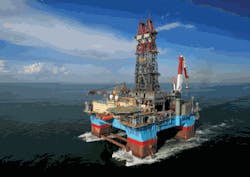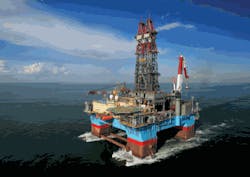New natural gas infrastructure: How much and where?
Bethel King, RBAC Inc., Houston, TX
The natural gas industry finds itself in a new era of natural gas pipeline development. Shale gas has created a new paradigm. Some shale production has been developed with minimal impact to the interstate pipeline grid because of its location near large legacy pipelines.
So the biggest activity in these instances has to do with gathering, compression, and processing – a boon to midstream companies and those MLPs in the right place at the right time. But not all activity is limited to this midstream space, so the next question is how much mainline capacity is needed and where?
Barnett
In the Barnett Shale area, we saw a lot of midstream activity, but the follow-on result was a bottleneck in the Carthage area in Northeast Texas as soon as local load was satisfied. This spawned a spate of Carthage-to-Perryville pipelines. Many of the developers of this infrastructure, along with potential shippers, used RBAC Inc.'s GPCM Natural Gas Market Forecasting System® to model alternative scenarios in order to make decisions on whether the capacity was needed or if their company should subscribe to the new space.
The GPCM system model includes all of North America, including Canada and Mexico, and takes LNG imports into consideration. One of the interesting things that scenarios showed at that time was that many of the competing projects to take Barnett Shale production from the Carthage area to Perryville would just move some of the bottleneck east and not completely solve the problem.
In some cases, companies considering LNG import facilities saw that building LNG header pipes that hooked into long-haul pipelines that delivered to big markets in the Mid-Atlantic and Northeast regions of the US needed to interconnect farther east than the new Carthage to Perryville pipelines in order to get the best net-back. Other developers of LNG import facilities saw that connecting into some of the new Carthage-to-Perryville lines was more cost-effective than building longer header pipelines.
As the Barnett Shale unfolded and experience with new technology has improved outcomes in the Fayetteville, Haynesville, and Woodford shale plays, we have seen natural gas prices fall significantly. At the same time, crude prices have increased due to continued strong growth in the developing world (see Figure 1).
These trends have shifted focus among producers to higher-value, liquids-rich natural gas production, which has made the Eagle Ford and Marcellus shale plays more attractive to producers and midstream companies.
Eagle Ford
The Eagle Ford has seen an immense amount of midstream attention due to its liquids-rich production, but the net affect from scenario testing with the GPCM Fundamental model shows that continued growth in this area will lead to a push back from West Texas supply toward Southern California and increased exports to Mexico. We have already seen this take place with exports during the first six months of 2011 running 186% year-over-year and larger than the first six months of any year going back to 1998.
Marcellus
In the Marcellus shale area there have been two distinct phases of infrastructure development. The first saw a number of announcements with in-service dates of 2012 to 2014. Many of these were developed essentially to pick up incremental supply in the Pennsylvania area and with minimal looping and/or compression deliver to traditional Mid-Atlantic and Northeast markets. These projects also included additional interconnects to allow hop-scotching across under-utilized sections of other area pipelines to reach New Jersey or New York markets. As Marcellus producers and liquid processors connect gas to the mainline faster than originally expected, many of these projects are being pushed up to 2010 to 2013.
As many scenarios with the GPCM Fundamental model revealed, the potential of the Marcellus Shale production over-shooting local demand, particularly in areas with large storage facilities like Leidy, it became obvious that additional paths were needed to allow optionality. Development is also driven by topographical and locational considerations of terrain and Not In My Backyard issues.
There are always risks to production estimates and, hence, infrastructure needs. Key among them for shale is regulatory risk. One area in particular that needs to be addressed is the concern over potential water contamination.
Figure 2 demonstrates a GPCM Fundamental Model scenario that compares Marcellus Shale supply and MidAtlantic natural gas demand for total demand (residential, commercial, industrial, and gas-fired generation).
The magnitude of this area continues to exceed all expectations. To get a sense of the size of just this single shale fairway, consider that in Spectra Energy's March 22, 2011 presentation, Texas Eastern reported plans to have Marcellus connects up to 5,600 MMbtu/day by the end of 2012. This is just one of several large long-haul pipelines that can take advantage of incremental supply. There are many more pipeline and infrastructure companies with interests in the area.
The interest has made pipeline developers more creative and innovative, hence the second wave of developments. Table 1 shows some of the more promising projects in the Marcellus area from both the first and second wave.
Because of the issues mentioned above, even competing projects have had success signing on shippers. Many in the second wave are backhauling incremental supply, re-routing it to alternative interconnects or markets, thus widening the absorption of the impact of so much additional gas.
One example of creative activities is the Empire Pipeline. By building a lateral, Empire Pipeline will be able to reverse the traditional flow of the pipeline as well as make interconnects with Millennium and Tennessee more viable. Backhauls will be necessary to provide the locational arbitrage that producers, shippera, and markets will demand.
Key areas to watch are Transco Zone 6 to Zone 5, cross-border flows reversing to serve Eastern Canada rather than importing from long-haul western Canadian supplies, and perhaps even gas pushed back into the Ohio valley – particularly if emissions legislation makes natural gas-fired power generation more attractive.
Development runs in cycles
Natural gas infrastructure development tends to happen in cycles. It is not unusual for pipeline capacity to arrive in a chunky, rather than smooth, fashion. It can take months for volumes to arrive to fill capacity, or producers may just wait to finish completions to fill available outlets as soon as they come online. Some cycles see competing projects extend open seasons trying to win shippers over to "their" team.
Occasionally there are game-changing projects such as the Alliance or Rockies Express, long-haul pipelines that were developed to take distressed gas to new market areas, that change the entire relationship of basis in both receipt and delivery areas.
There has been some concern recently that lack of mobility in the Marcellus shale area will adversely influence the basis spread in the mid-term (2 to 5 years out). The projects listed in the table are proof that pipeline developers are ready and willing to prevent bottlenecks in getting this supply to market. It will be interesting to see whether these projects will be able to work well together to keep a basis collapse from happening.
RBAC's founder, Dr. Robert Brooks, puts it this way: "Production which thoughtfully addresses valid public concerns about the environment and particularly local water supplies, adequate midstream development of processing and gathering, and follow-on transmission line development that creatively routes gas to traditional and new customers will ensure that the market as a whole benefits from this potentially huge shale play."
About the author
More Oil & Gas Financial Journal Current Issue Articles
More Oil & Gas Financial Journal Archives Issue Articles
View Oil and Gas Articles on PennEnergy.com






